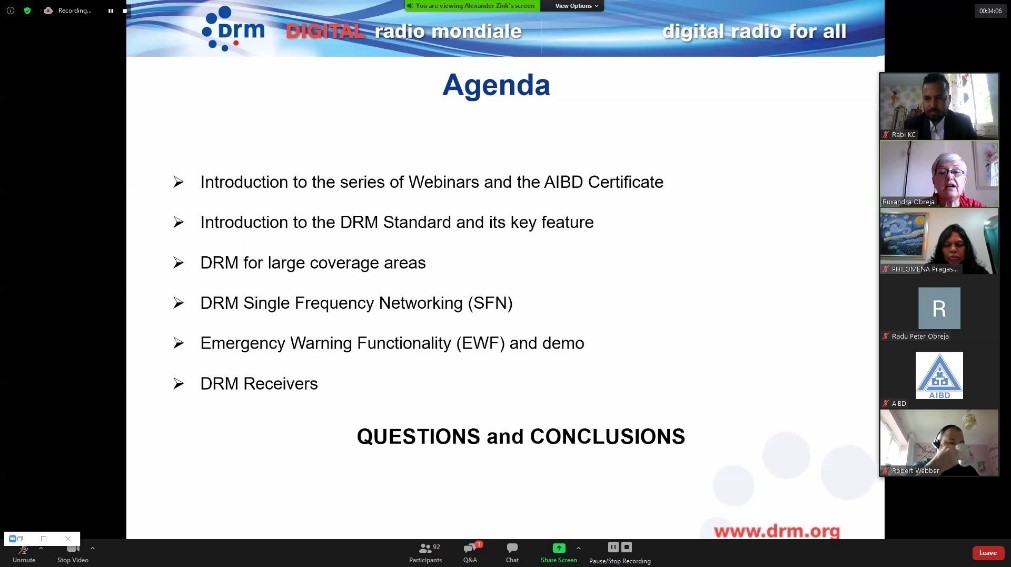
By Aditya Sharma
On the 30th of July, 2020, the Asia-Pacific Institute for Broadcasting Development collaborated with UNICEF to host a webinar about the pandemic. But this wasn’t just any other webinar about the pandemic, which might discuss things like vaccines, cures, containment, and other related items. Instead, it was about a group of people which was possibly the worst impacted by the pandemic, but also one of the most ignored groups. This group is children – 95% of whom have had to stay home due to the various shutdown orders, which has led to adverse effects on the availability of education for students, especially for students in poorer countries with a large digital divide.
So there’s no denying that this webinar was sorely needed. In this, fifteen students from all over the world sat down (online, of course!) with various representatives from major media houses from Italy, South Korea, Mexico, and Argentina to discuss how children consumed media over the course of the pandemic. The event, which was co-moderated by Jessica Sercombe of UNICEF, and Aditya Sharma, a student in Bangkok and a voice for the safety of children online, was a major success in ensuring that content creators could hear the voices of their target audience. They found that by and large, students had actually been facing an infodemic – an excess of information on the pandemic. However, there was a lack of uplifting content on the news, and having such conversations was crucial to ensuring that organizations could see what they were doing and understand how to best create content for young people.
However, no good endeavor is without challenge, and this was no different. Bringing together people from so many different countries, with so many different time zones, was definitely easy. Each person was necessary to the success of a fruitful dialogue – without them, crucial voices would have been missed, and crucial perspectives would have been notably missing from the event. One important find from the event was that effective communication and dialogue simply cannot be held unless all involved parties are ready to speak to each other, and have the same end goal of societal betterment. If the voice of even one of the youth representatives, or content creators had been left out, the output of the event would have been considerably reduced.
With this event, credit must be given where it’s due – to the organizers of this webinar, who made it possible for everyone to come together, despite the various differences present. They worked tirelessly, behind the scenes, to ensure that the webinar was pulled off without a hitch, and that everything went smoothly. If they didn’t get the acknowledgment they deserve, it is only right that the ‘backstage crew’ get their credit, here. They deserve every bit of it.
To conclude, the online webinar on Children Living in a Pandemic was a major success, due to the high level of interaction between the youth representatives and the content creators. This dialogue was facilitated by the AIBD and UNICEF, and led by an incredible director, Mrs. Philomena Pragasam, who ensured that so many different parties, from all over the world could come together and talk about a much-sidelined topic – what media are children consuming, and how can it be tailored to help them the most? Bringing together the content creators and youth was an essential endeavor, and children around the world will be better able to pass through an incredibly tough time.

Children Living in the Pandemic
By Aditya Sharma On the 30th of July, 2020, the Asia-Pacific
Dialogue on ‘Disinformation, Legislation, and Freedom of Expression’
“We can’t create new law every time we have new
AIBD/DRM Regional Webinar DRM-Part 1: Large Coverage & Implementation
AIBD with the collaboration of the DRM Consortium organised the
Report the News, Don’t be the News
Journalists need to anticipate various kind of potential risks that
Content Sharing – From East to West
By: Lee Lai Mee (CCO), infographics by YK Tang(intern) The content
Protect Your Child From Online Predators
Article by Qishin Tariq published in Star.my in reference to AIBD's recent webinar on
AIBD’s webinar on Managing Cybersecurity during COVID-19
In collaboration with Prasar Bharti (India) and MDEC (Malaysia), AIBD
AIBD/DRM Regional Webinar on the Introduction Efficient Broadcasting
AIBD with the collaboration of DRM Consortium organised an online
AIBD Director discusses recent initiatives & achievements during COVID19
Ms Philomena Gnanapragasam, Director, AIBD discusses the recent initiatives &
First Ever Virtual COVID19 Sharing Session
In what was the first ever virtual COVID Response Session










